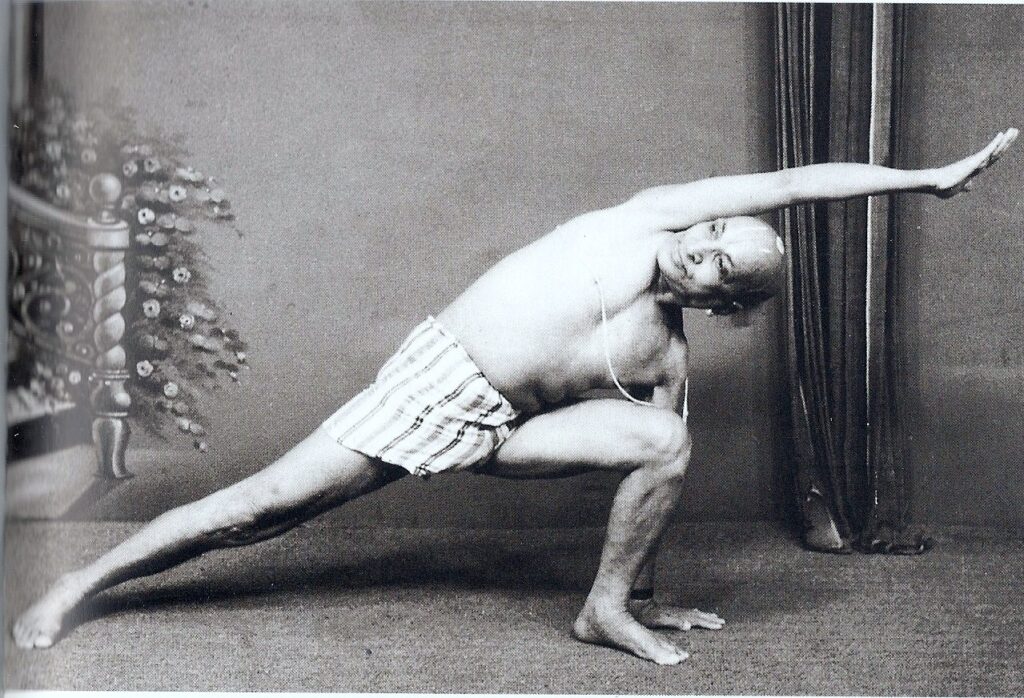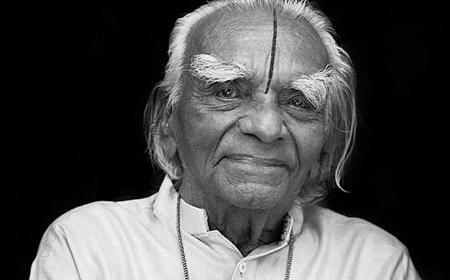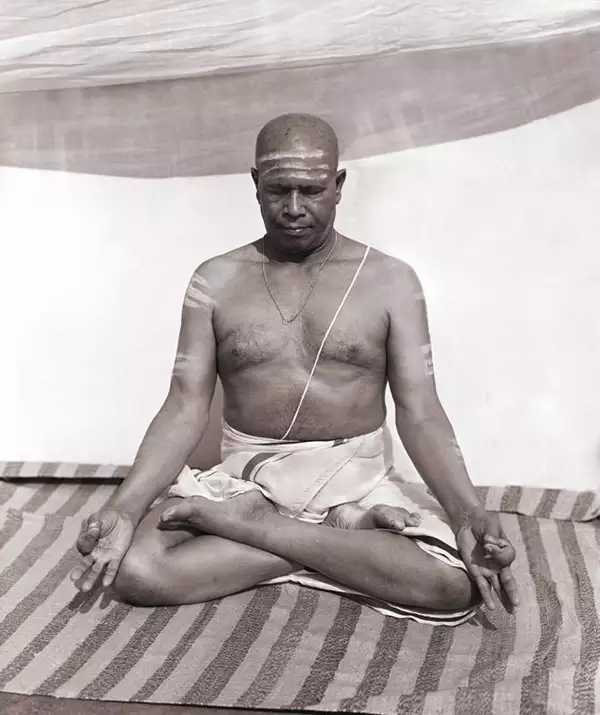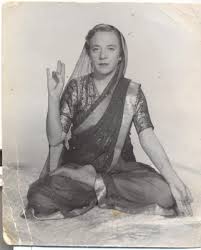Tirumalai Krishnamacharya, often referred to as the “Father of Modern Yoga,” was a legendary Indian yoga teacher and Ayurvedic healer who lived from 1888 to 1989.
Born in 1888 in the small village of Muchukundapuram in India, Tirumalai Krishnamacharya was a prodigy. By the age of 16, he had already mastered several ancient texts and was well-versed in Sanskrit. His thirst for knowledge took him to various parts of India, where he studied under eminent scholars and yogis.
He is credited with reviving and popularizing the ancient practice of yoga, which had become largely forgotten in India during the 19th century.
Krishnamacharya’s Early Life and Training
Born in a small village in Tamil Nadu, Krishnamacharya was introduced to yoga at a young age by his father, who was a Sanskrit scholar and yoga practitioner. He went on to study extensively under the guidance of renowned yoga masters, including the Himalayan sage Sri Ramamohan Brahmachari, Here, he studied under his guru, for seven and a half years.
It was during this period that he delved deep into the ancient practices of yoga, learning asanas, pranayama, and therapeutic applications of yoga.
Krishnamacharya’s Teachings and Legacy

During his lifetime, Krishnamacharya developed a unique and dynamic approach to yoga, which emphasized the importance of adapting the practice to the individual’s needs and abilities.
Krishnamacharya is mainly credited with reviving Hatha Yoga, a practice that had almost faded into obscurity. He blended traditional yoga techniques with modern science, making it accessible to the masses. His teachings emphasized the importance of breath control, alignment, and the therapeutic benefits of yoga.
He believed that yoga should be a tool for improving overall health and well-being, and he incorporated elements of Ayurveda, Sanskrit, and other ancient Indian traditions into his teachings.
The Mysore Palace

In the 1930s, Krishnamacharya was invited to teach at the Mysore Palace by the Maharaja of Mysore. This was a turning point in his career. At the palace, he developed a structured approach to teaching yoga, which included the use of props and individualized instruction. This method laid the foundation for what we now know as Vinyasa Yoga.
Influence on Modern Yoga
Krishnamacharya’s influence on the development of modern yoga cannot be overstated. Many of the most renowned yoga teachers of the 20th century, including B.K.S. Iyengar, Pattabhi Jois, and T.K.V. Desikachar, were either direct students of Krishnamacharya or were heavily influenced by his teachings.
B.K.S. Iyengar

One of Krishnamacharya’s most famous students, B.K.S. Iyengar, went on to develop Iyengar Yoga. Known for its emphasis on alignment and precision, Iyengar Yoga has helped millions of people worldwide improve their physical and mental well-being.
Pattabhi Jois

Another notable student, Pattabhi Jois, founded Ashtanga Yoga. This dynamic and physically demanding practice has gained immense popularity, especially in the West. Jois’s teachings continue to inspire countless practitioners and teachers.
Indra Devi

Indra Devi, often referred to as the First Lady of Yoga, was one of Krishnamacharya’s first female students. She played a pivotal role in bringing yoga to the Western world, particularly in Hollywood, where she taught celebrities and popularized the practice.
Conclusion
Tirumalai Krishnamacharya’s legacy continues to shape the practice of yoga around the world. His emphasis on the therapeutic and holistic aspects of yoga, as well as his belief in the importance of customizing the practice to individual needs, have profoundly influenced the way yoga is taught and practiced today.
He is widely regarded as one of the most important figures in the history of yoga, and his contributions continue to inspire and guide yoga practitioners of all levels.

